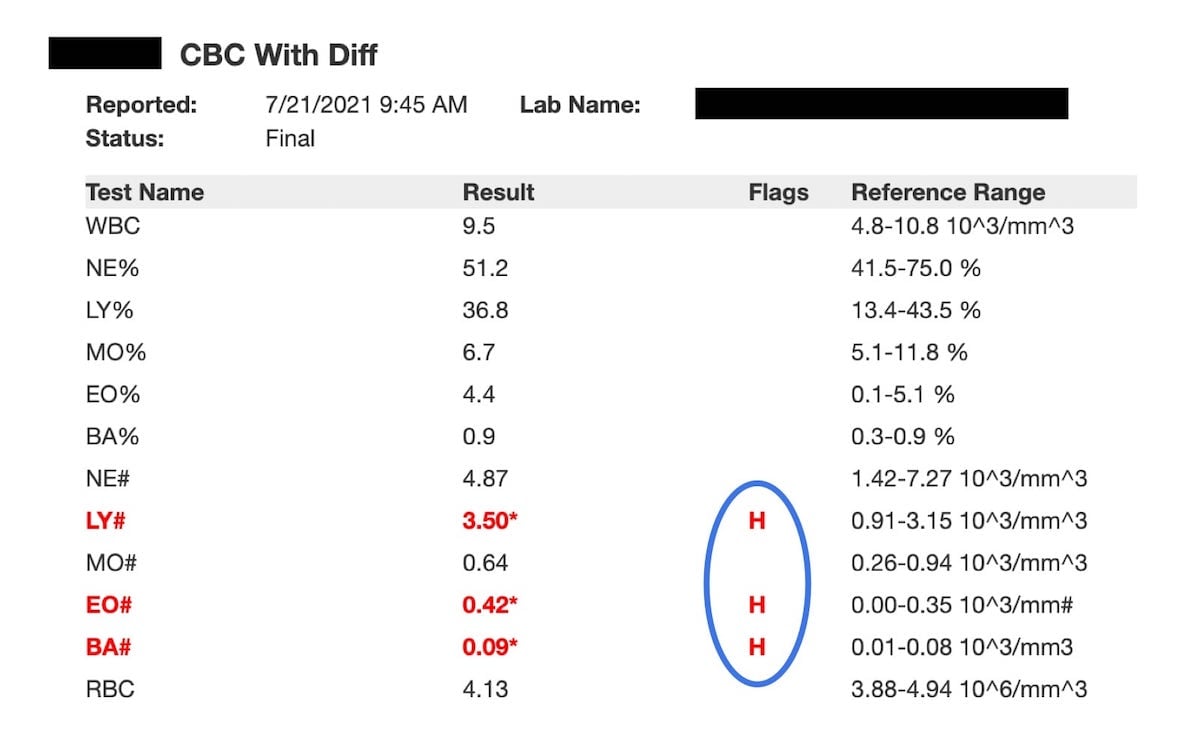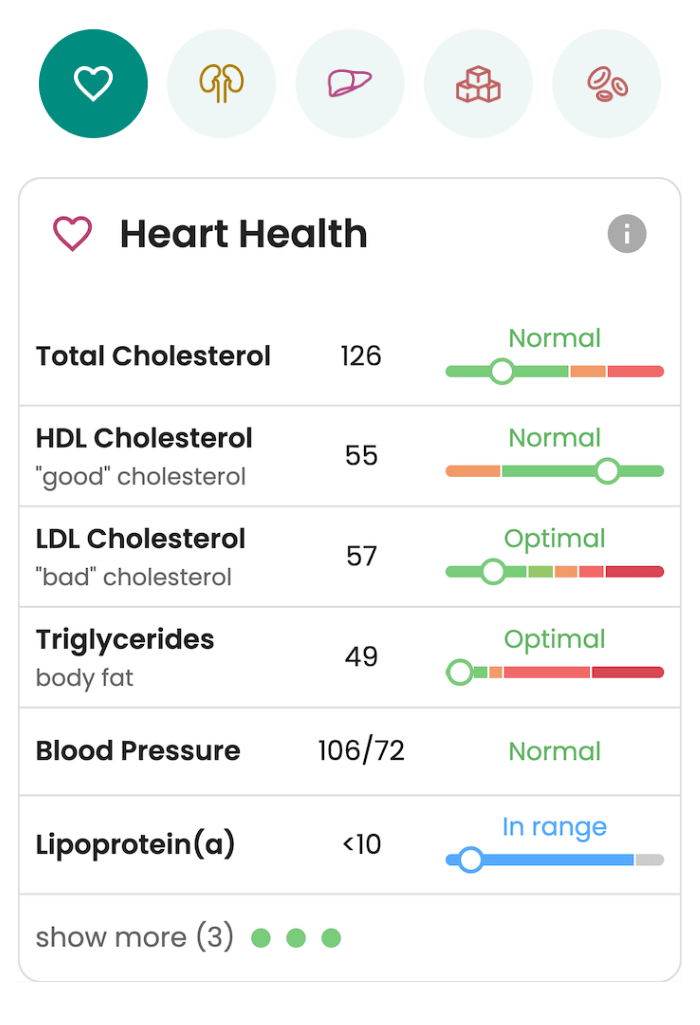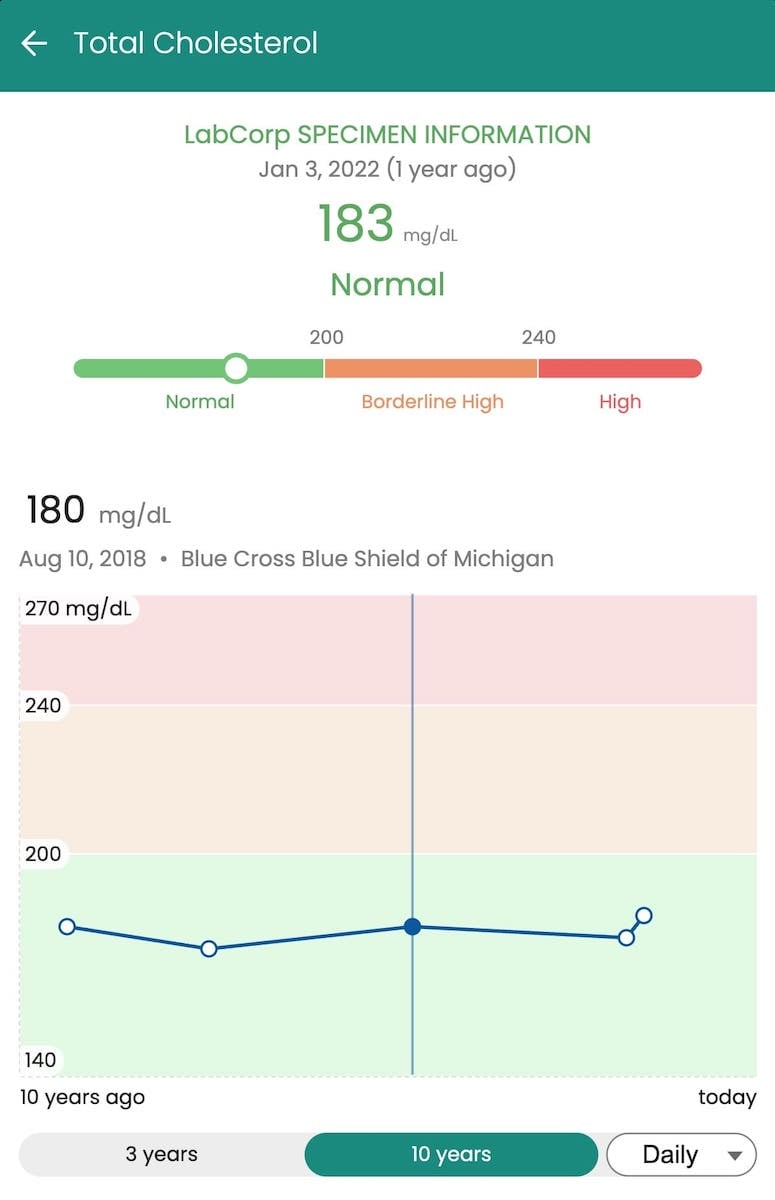Undergoing routine lab testing is a great way to stay on top of your health. Tests like lipid panels and complete blood counts are recommended yearly or every several years, depending on the test. However, the results of these routine tests can tell you a lot about your body. For example, they tell your provider if a part of your body isn't working correctly or if changes may be happening, even if you aren't experiencing symptoms.
For that reason and more, routine testing is useful, and understanding the results of these tests can help keep you informed of your own health. Still, reading lab results without years of medical training can feel confusing and pointless. So, before spending hours looking up every measurement, you can save time by learning to recognize out-of-range results and ask your doctor what they could mean and whether they are significant.
First, what do “out-of-range” results mean?

When you receive a copy of your lab results, you may notice a column called "reference range". This column shows you the typical normal range of results for most healthy individuals. This range (which can vary from laboratory to laboratory as their lab process may differ) is the range your doctor or other medical professionals compare your results to in their assessment.
Results that fall outside of the normal reference range will usually have some indication that they are out-of-range. Usually, this indication can be found within your results' "flags" column. The "flags" column often contains a particular symbol, letter, or word that quickly tells you whether your test results are in range. Different labs will use various symbols to signify an out-of-range result, so it's best to ask your doctor directly what a symbol or flag on your results could mean.
Healthy people can still have out-of-range lab results. Therefore, you shouldn't be alarmed if your doctor tells you a result slightly out of range is nothing to be worried about. All of your labs need to be understood in the context of your overall health.
While on the other hand, if you are experiencing unexplainable symptoms, your lab results might not be able to tell you what is going on and may come back normal. Therefore, it's critical to talk to your doctor about any lab results you may have, normal or not.
What does an "A" flag indicate?
Lab results with an "A" flag may indicate different things depending on the lab where your test is done. Sometimes an "A" flag on your lab results stands for "adjusted". Adjusted lab results are results that were incorrect and have been re-run by the lab.
An "A" flag may also represent the word "abnormal", indicating a lab result that falls out of the reference range. It's important to consult your doctor about any "A" flags you see on your results.

What do "L" and "H" flags indicate?
An "L" and an "H" flag indicate low or high results, respectively. That means that if your lab result falls above the typical reference range, you may see an "H" flag. On the other hand, if a result falls below the reference range, you may see an "L" flag.


Higher or lower values may indicate different problems. For example, a low red blood cell count can mean anemia, malnutrition, chronic kidney disease, etc., while a high red blood cell count can indicate dehydration, blood disorders, and more. Therefore, you should consult with your doctor to learn more about what a high or low result could mean.
What does a "C" flag on my lab results indicate?
Again, depending on the lab, a "C" flag may represent different things. For example, a "C" may indicate results that were adjusted or corrected by the lab due to a clearly wrong first result. A "C" flag may also indicate critical results or results that are dangerously out-of-range. If you see a "C" flag on your lab results, it's essential to clarify with your doctor what it may mean.
What are some other ways out-of-range results are displayed?
You may also see certain colors or symbols in your lab results. For example, out-of-range lab results may be colored red or bolded. In addition, lab results may have certain symbols, such as an asterisk or caution sign, next to them if they are out-of-range.


Depending on what test you are getting done, you may see "positive" or "negative" on your results. Positive results mean what you were testing for, whether it was a disease or substance, is present in your body. Negative results mean it was not found. Inconclusive results mean the test did not confirm whether or not the substance or disease is present and usually requires more testing.
Positive or negative results generally require more assistance in their interpretation to confirm you know what your expected findings should be. Depending on what you are testing for, a positive result may be normal or not, and the same is true for a negative result. Be sure to seek professional guidance when interpreting these types of results.
Want to gain a deeper understanding of your lab results?

You can easily find information on your lab tests and results on your Guava account. Guava provides educational material on what certain lab tests are typically used for, the normal range of a test, what out-of-range results could mean, and more.


If you upload or sync your records to your account, Guava can automatically filter through hundreds of pages of documents to find useful lab tests and results. Your data is then organized and charted on easy-to-read graphs showing how your results have changed over time or where your data falls in the typical range. You can share this information easily with your doctor to give them a comprehensive look into your health.
If you're behind on your routine lab work, you can also find out what tests you need and discuss them with your doctor.
Guava encourages everyone to understand and improve their health, even if that means something as small as learning to recognize out-of-range test results. Talking to your doctor about your test results proactively can save you money, time, and worry in the future.






